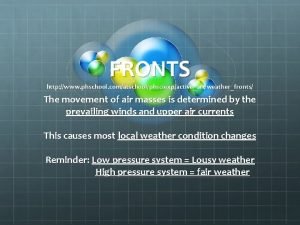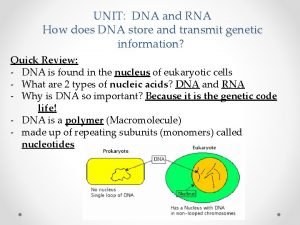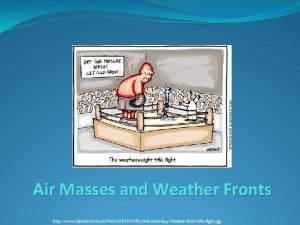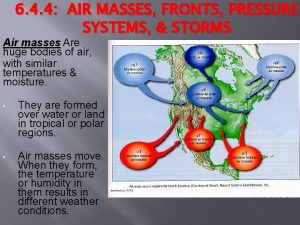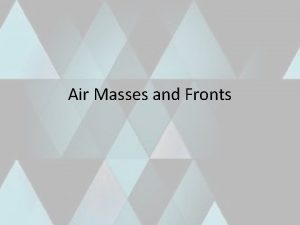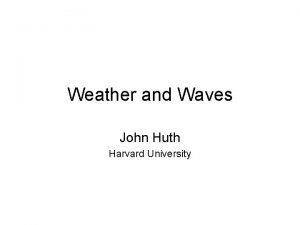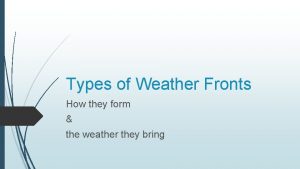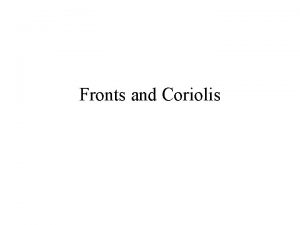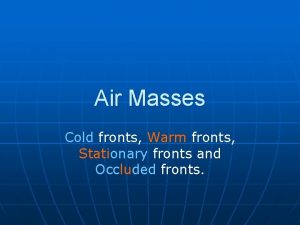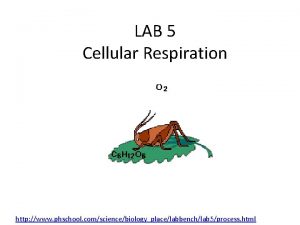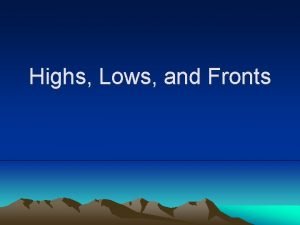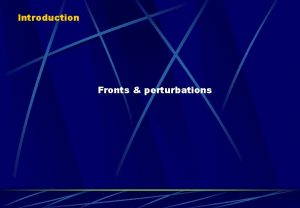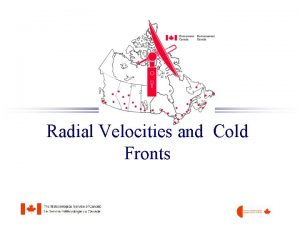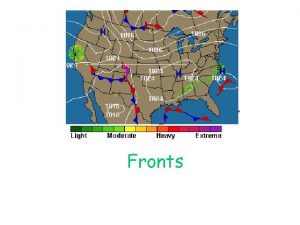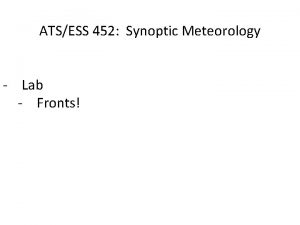FRONTS http www phschool comatschoolphsciexpactiveartweatherfronts The movement of
















- Slides: 16

FRONTS http: //www. phschool. com/atschool/phsciexp/active_art/weather_fronts/ The movement of air masses is determined by the prevailing winds and upper air currents This causes most local weather condition changes Reminder: Low pressure system = Lousy weather High pressure system = fair weather

FRONT An area where two air masses with different temperatures and densities collide but do not mix. This collision causes storms and changeable weather. There are 4 types of fronts, see esrt. page 13 for symbols.

COLD FRONT Occurs when a rapidly moving cold air mass runs into a slowly moving warm air mass. Dense cold air wedges under warmer air and pushes it upward. Warm air rises, cools and condenses. Passage of a cold front means rising barometric pressure = High Pressure system Towering cumulus and cumulonimbus clouds form from the drops of water produced by the rapid rise of warm air.

Weather Conditions: Cold fronts move quickly, therefore they can cause abrupt weather changes. Strong winds and severe thunderstorms often occur. If enough water is in the air, heavy rain or snow can occur. If little water in the air, then there are only cloudy skies.

Cold front


WARM FRONT Occurs when a slow moving warm air mass collides with a slowly moving cold air mass. Cold air is more dense so warm air rises over the cold air. The warm air rises up and over the air mass it is replacing Slower moving than a cold front. , Take a day or two to pass over. As the front passes, the temperature increases slowly Passage of a warm front means sinking barometric pressure = low pressure system

Weather Conditions Clouds, storms and rain often occur. If the warm air is dry, clouds form. If the warm air is humid, showers form along the boundary The rising air may lead to thick layered clouds and gentle but long lasting precipitation Light rain or snow for long periods

Warm Front


STATIONARY FRONT When the power of the cold and warm air are the same, neither the cold and warm air masses do not have enough force to move the other. Where the warm and cool air meet, water vapor in the warm air condenses into rain, snow, fog or clouds. Can remain in one location and keep skies cloudy for hours to days. Direction of the movement is difficult to predict with a stationary front. *** If the stationary front advances towards the side of the half circles, it becomes a warm front. *** If the stationary front advances towards the side of the blue triangles, it becomes a cold front.

STATIONARY FRONT

OCCLUDED FRONT Cold fronts move faster than warm fronts resulting in the cold front overtaking the warm front A warm air mass is caught between two cooler air masses The less dense warm air mass is pushed up. The air below becomes cooler and the warm air mass is cut off from the ground (aka “occluded”) Body of warm air is held aloft by two cooler air masses merging beneath

Weather Conditions: Warm air cools and water vapor condenses, resulting in cloudy and rainy weather or snow. Often associated with severe weather conditions ** The warm air/cold air interface is isolated above surface, a change in temp may not be noticed on the ground.


 Warm front animation
Warm front animation Why are cold fronts steeper than warm fronts
Why are cold fronts steeper than warm fronts Phschool
Phschool Dna replication phschool
Dna replication phschool Movement area
Movement area What is an axial movement
What is an axial movement Types of drawer fronts
Types of drawer fronts Inkcinct
Inkcinct Fronts and pressure systems
Fronts and pressure systems Warm front picture
Warm front picture Types of air masses
Types of air masses Air masses and their characteristics
Air masses and their characteristics Beaufort scale
Beaufort scale Air masses and fronts
Air masses and fronts Warm air front
Warm air front How does cold front form
How does cold front form Fronts
Fronts


